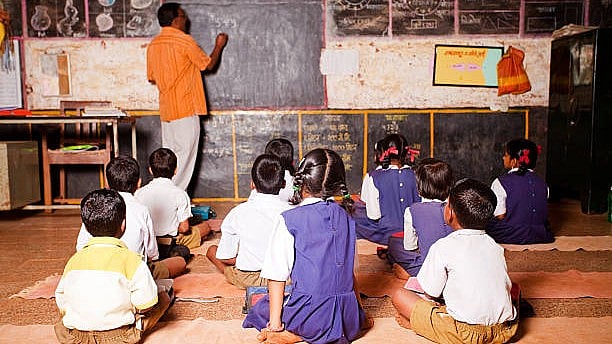
Image for representation.
Credit: iStock Photo
Bengaluru: The Annual Status of Education Report (ASER) 2024 released on Tuesday has revealed that 7.1 per cent of class 3 students studying at schools in rural Karnataka (both government and private) cannot read a single letter.
As recorded in the report, 19.3 per cent of class 3 students can read letters, but not words or sentences and 36.2 per cent can read words, but not class 1 or higher level text.
As mentioned in the report, 21.5 per cent can read the class-1 level text, but not the class-2 level text and 15.9 per cent can read class 2 level text.
However, the percentage of class 3 students, who can read class-2 level textbooks, has slightly increased - both at government and private schools.
According to the survey report, in government schools, it almost doubled to 15.4 per cent from 7.7 per cent in 2022 in 2024 and at private schools, it has increased to 17.2 per cent from 11.7 per cent.
The report said that only 23.9 per cent of class 3 students in government schools can perform numerical subtraction.
Though the results improved compared to 19.6 per cent during the previous survey, this is lesser compared to private counterparts where they reported 31.1 per cent.
To test their numerical skills, children were expected to do two-digit by two-digit subtraction with borrowing.
The report also revealed that only 19 per cent of government school kids in class 5 and 35 per cent in class 8 can do divisions, which is 25 per cent and 43 per cent respectively among private schools.
Decline in enrolment
The Annual Status of Education Report (ASER) 2024 shows that Karnataka has seen a decrease in enrolment between the age group of 6 and 14-year-olds at government schools.
It was 76 per cent during 2022 and reduced to 71 per cent in the latest report.
The report highlighted that 83 per cent of schools have less than 60 students. However, the enrolment of 4-year-olds at the pre-primary level exceeds 95 per cent.
Digital literacy
Gender gaps were observed in the performance of every task, with the largest gap in children’s ability to set an alarm on the smartphone (81.5 per cent boys as compared to 72.4 per cent girls).
In some southern states like Karnataka, Andhra Pradesh, and Kerala, girls either outperform boys or are at the same level as them.
As much as 93 per cent of children have smartphones at home and 76% of them were able to use smartphones and 63 per cent of them could bring smartphones to school during the survey.
Seventy per cent of the children aged between 14 to 16 years were recorded as active on social media during the reference week by using social media.
In this, 52 per cent were able to block/report profiles, 49 per cent could make private profiles and 51 per cent were able to change passwords.
